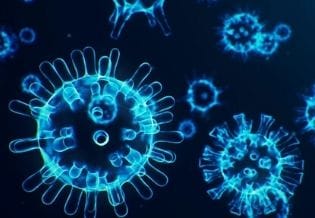Aims & Scope
International Journal of Coronaviruses
IJCV publishes fundamental virology research on coronavirus biology, molecular mechanisms, viral evolution, and host-pathogen interactions. We focus on the microbial science of coronaviruses-from genome structure to immune evasion-advancing understanding of viral pathogenesis at the molecular and cellular level.
Core Research Keywords
We Do NOT Consider:
Clinical treatment protocols, patient management strategies, prescribing guidelines, healthcare delivery models, or clinical outcome studies without mechanistic virology focus. Our scope is microbial science, not clinical practice.
Research Scope: Tiered Structure
Molecular Virology & Genome Biology
- Viral genome structure, organization, and replication
- Protein structure-function relationships (spike, RdRp, proteases)
- RNA processing, transcription, and translation mechanisms
- Viral polyprotein processing and maturation
- Genome packaging and virion assembly
- Comparative genomics and phylogenetic analysis
Typical Fit Example:
Crystal structure of SARS-CoV-2 main protease revealing substrate binding mechanisms and implications for antiviral design
Viral Evolution & Genetics
- Mutation rates and genetic diversity
- Recombination and reassortment events
- Selection pressures and adaptive evolution
- Emergence of variants and genetic drift
- Molecular epidemiology and transmission genetics
- Evolutionary constraints on viral fitness
Typical Fit Example:
Molecular evolution of spike protein receptor binding domain under immune selection pressure in animal reservoirs
Host-Pathogen Interactions
- Viral entry mechanisms and receptor binding
- Cellular tropism and tissue-specific infection
- Innate immune recognition and evasion strategies
- Interferon antagonism and immune suppression
- Host cell responses to infection
- Viral manipulation of cellular pathways
Typical Fit Example:
Mechanisms by which coronavirus NSP1 protein suppresses host translation to evade innate immune responses
Immunology & Immune Mechanisms
- Antibody responses and neutralization mechanisms
- T-cell recognition and cellular immunity
- Immune memory formation and duration
- Cross-reactive immunity between coronavirus species
- Immune escape mutations and antigenic drift
- Immunopathology and cytokine responses
Typical Fit Example:
Structural basis for antibody neutralization escape by spike protein mutations in emerging variants
Antiviral Development & Resistance
- Antiviral drug mechanisms of action
- Resistance mutation identification and characterization
- Drug target validation and screening
- Structure-based drug design
- Combination therapy strategies
Vaccine Immunology
- Vaccine antigen design and optimization
- Immune responses to vaccination platforms
- Correlates of protection studies
- Adjuvant mechanisms and efficacy
- Mucosal immunity and vaccine delivery
Zoonotic Ecology & Transmission
- Animal reservoir identification and characterization
- Spillover events and cross-species transmission
- Wildlife surveillance and viral diversity
- Host range determinants and adaptation
- One Health surveillance approaches
Diagnostic Methods & Detection
- Novel detection technologies and platforms
- Molecular diagnostic assay development
- Serological assay design and validation
- Point-of-care diagnostic innovations
- Biosensor development for viral detection
Computational Virology
- Structural modeling and molecular dynamics
- Machine learning for variant prediction
- Bioinformatics pipeline development
- Systems biology approaches to infection
Note:
Submissions require experimental validation or clear mechanistic insights. Purely computational studies undergo additional editorial review.
Viral Pathogenesis Mechanisms
- Cellular damage mechanisms and apoptosis
- Inflammatory signaling pathways
- Tissue-specific pathology mechanisms
- Viral persistence and chronic infection
Note:
Must focus on molecular mechanisms. Clinical pathology descriptions without mechanistic insight are out of scope.
Transmission Dynamics Modeling
- Mathematical models of viral transmission
- Epidemiological modeling with viral genetics
- Outbreak prediction and surveillance
- Environmental stability and transmission routes
Note:
Must integrate virology data. Pure epidemiological models without viral biology focus are out of scope.
Explicitly Out of Scope
- Clinical treatment protocols and patient management guidelines Rationale: Clinical practice belongs in medical journals; we focus on viral mechanisms
- Healthcare delivery models and hospital infection control policies Rationale: Public health implementation without virology focus is outside our scope
- Clinical outcome studies without mechanistic virology component Rationale: Patient outcomes alone do not advance understanding of viral biology
- Psychological or social impact studies without biological basis Rationale: Social science research belongs in specialized journals
- Health policy analysis and economic evaluations Rationale: Policy research without virology focus is outside microbiology scope
Article Types & Editorial Priorities
Original Research Articles
Comprehensive reports of novel experimental findings advancing coronavirus virology. Must include robust methodology and mechanistic insights.
Systematic Reviews
PRISMA-compliant systematic reviews synthesizing current knowledge on specific virology topics with meta-analysis when appropriate.
Methods & Protocols
Detailed descriptions of novel experimental methods, validated protocols, or significant methodological improvements with broad applicability.
Rapid Communications
Time-sensitive findings of immediate importance to the virology community. Expedited peer review within 14 days.
Short Communications
Brief reports of preliminary findings, novel observations, or technical innovations. Maximum 3,000 words.
Data Notes
Descriptions of valuable datasets with reuse potential. Must include data accessibility and quality validation.
Mini Reviews
Focused reviews on specific topics or recent developments. Maximum 5,000 words with critical analysis.
Perspectives
Expert viewpoints on emerging topics, controversies, or future directions in coronavirus research.
Technical Notes
Brief descriptions of new techniques, tools, or methodological improvements with practical applications.
Case Reports
Only considered if they provide exceptional mechanistic insights or document novel viral phenomena. Clinical case descriptions without virology focus are rejected.
Opinion Pieces
Rarely published. Must be invited by editors and address fundamental questions in coronavirus biology.
Commentaries
Limited to responses to published articles or discussion of significant controversies. Subject to editorial discretion.
Editorial Standards & Requirements
Reporting Guidelines
ARRIVE for animal studies, CONSORT for trials, STROBE for observational studies, PRISMA for systematic reviews. Compliance mandatory.
Data Availability
All data supporting conclusions must be deposited in public repositories. Genome sequences in GenBank/GISAID, structures in PDB.
Ethics Approval
Human subjects research requires IRB approval. Animal studies require IACUC approval. Biosafety protocols must be documented.
Preprint Policy
Preprints on bioRxiv, medRxiv accepted. Must be disclosed during submission. Does not affect consideration.
Conflict of Interest
All financial and non-financial conflicts must be declared. Undisclosed conflicts result in manuscript rejection.
Authorship Criteria
Must meet ICMJE criteria: substantial contributions to conception, data acquisition, analysis, drafting, and final approval.
Decision Metrics & Performance
Time to First Decision
21 days
Acceptance Rate
35%
Time to Publication
45 days
Article Processing Charge
$2400
Submit Your Coronavirus Virology Research
Advance the molecular understanding of coronaviruses through rigorous peer-reviewed publication. Our editorial team specializes in virology, ensuring expert evaluation of your mechanistic research.


